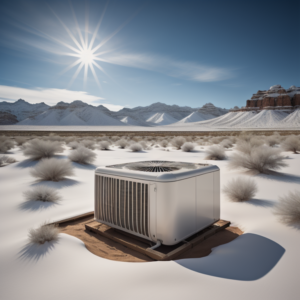The Middle East is known for its scorching summers, where temperatures often soar well above 40 degrees Celsius. In this harsh climate, reliable and efficient HVAC (Heating, Ventilation, and Air Conditioning) systems are not just a luxury but a necessity. In this article, we’ll delve into the unique challenges and innovative solutions associated with HVAC systems in the Middle East.

1. Extreme Weather Conditions
The Middle East’s climate is characterized by extreme weather conditions, with blazing hot summers and relatively mild winters. This presents a unique challenge for HVAC systems, as they must be designed to handle both the intense heat and occasional cold spells.
To combat the extreme heat, HVAC systems in the Middle East are equipped with powerful cooling mechanisms. The use of advanced air conditioning technology, combined with energy-efficient designs, helps maintain comfortable indoor temperatures while minimizing energy consumption.
2. Energy Efficiency
Energy efficiency is a critical consideration in the Middle East, where energy consumption for cooling purposes can be substantial. To address this issue, HVAC systems in the region have evolved to incorporate the latest technological advancements. This includes the use of variable refrigerant flow (VRF) systems, which provide precise temperature control and significantly reduce energy consumption. Additionally, many buildings in the Middle East now use solar-powered HVAC systems, taking advantage of the abundant sunlight in the region.
3. Sustainability
As global awareness of environmental issues grows, the Middle East has also been focusing on sustainability in HVAC systems. The region has embraced the concept of green building design, which includes sustainable HVAC solutions such as geothermal heating and cooling, smart thermostats, and energy recovery systems. These technologies not only reduce the environmental impact but also contribute to long-term cost savings.
4. Dust and Sand
One of the unique challenges faced by HVAC systems in the Middle East is the prevalence of dust and sand in the air. This can lead to clogged filters and reduced system efficiency. To combat this, HVAC systems in the region often include advanced filtration systems, regular maintenance schedules, and protective measures to prevent sand and dust from infiltrating the system.
5. Building Design
The design of buildings in the Middle East also plays a significant role in HVAC efficiency. Many modern buildings incorporate well-insulated materials, strategic shading, and efficient window glazing to minimize heat gain and reduce the workload on HVAC systems. Proper insulation is crucial to keep the cool air inside during the hot summers and maintain warmth during the cooler winter months.
6. Smart Technology
Smart technology has revolutionized HVAC systems worldwide, and the Middle East is no exception. Many buildings in the region are equipped with smart thermostats and building automation systems that can be controlled remotely. This allows occupants to optimize energy usage and maintain comfortable indoor conditions even when they are not on-site.
Conclusion
In the unforgiving climate of the Middle East, HVAC systems are more than just a luxury; they are essential for comfort and productivity. To meet the unique challenges posed by extreme heat, energy efficiency, sustainability goals, and environmental factors, HVAC technology in the Middle East has evolved significantly. As the region continues to grow and urbanize, the development and implementation of innovative HVAC solutions will remain a top priority, ensuring that residents and businesses can stay cool and comfortable in the scorching desert heat.
